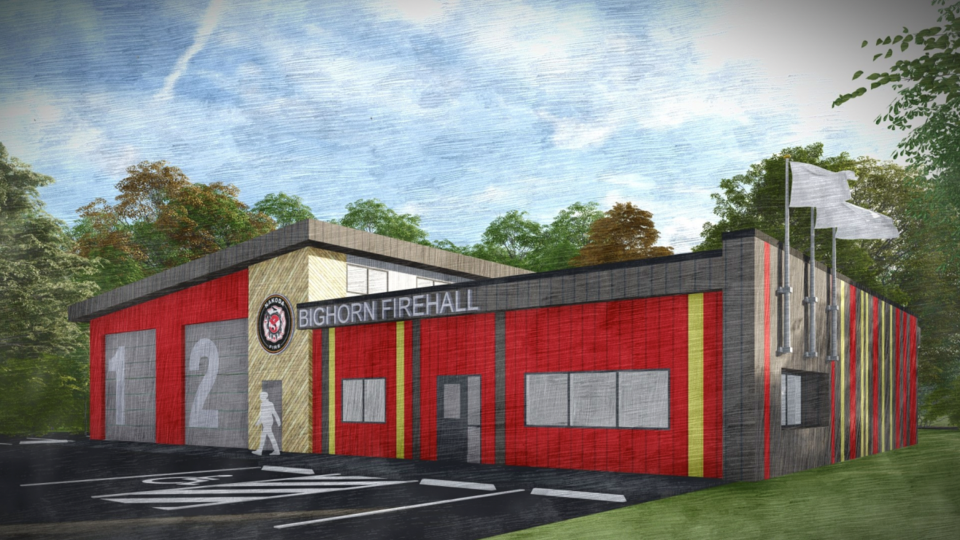ÎYÂRHE NAKODA – After years of relying on Clearwater County’s fire services in Nordegg, a 24-minute commute from Îyârhe (Stoney) Nakoda First Nation’s Big Horn community, the remote reserve is finally getting its own fire hall.
The development is pegged at a cost of $4.2 million and will serve a population of about 237 people, according to the latest available census data in 2016.
“There is definitely a need for the community to have its own fire hall,” said Blair Birch, director of capital projects and public works with Stoney Tribal Administration. “But in conjunction with that, you also need some trained people – a volunteer fire department with some training and background and equipment to be able to respond from a local level.”
Birch said that work has been ongoing for the last couple of years and isn’t at the level they need yet to operate a local department, but is likely to gain more traction once the facility is in place.
The fire hall’s design, he said, is complete and will include two bays. One will house a wildfire bush buggy that is already owned by the Nation, but not currently housed in the community, and the other will allow for the storage of a fire engine, which will be acquired closer to completion around May 2024.
The goal is to have local Nation members, who are primarily part of the Goodstoney band in Big Horn, operate the station.
While the community has not recently come under immediate threat from wildfires, unlike other nearby First Nations’ communities like Sunchild and O’Chiese, Birch said it will be a game-changer for future fire emergencies.
The architect for the project is Berry Architecture, based out of Red Deer. In its design, the architect has also included a decontamination room, duty gear cleaning and turnout gear storage, a change room, an office, a training room and ancillary spaces. It will become part of the Nation’s Stoney Nakoda Emergency Services, based out of Mînî Thnî.
Construction of the fire hall is expected to begin in June and will be located south of the Ta'Otha School. Activities to complete the proposed project include tree removal, clearing a young stand of mixed wood trees, levelling the site, excavation of soil, import of fill material, installation of underground servicing to connect to the waterline, fibre optic line, effluent disposal field and powerlines.
The site will require backfilling and compaction of excavation areas and construction of a parking area and widening of access roads.
The project is entirely funded by Indigenous Services Canada, which visited the Big Horn community for the first time in 2019, and recognized the need for a local fire service while on an invited tour with Birch, Goodstoney CEO Raymond Greenwood and the local Big Horn manager at the time.
The Local Journalism Initiative is funded by the Government of Canada. The position covers Îyârhe (Stoney) Nakoda First Nation and Kananaskis Country.




